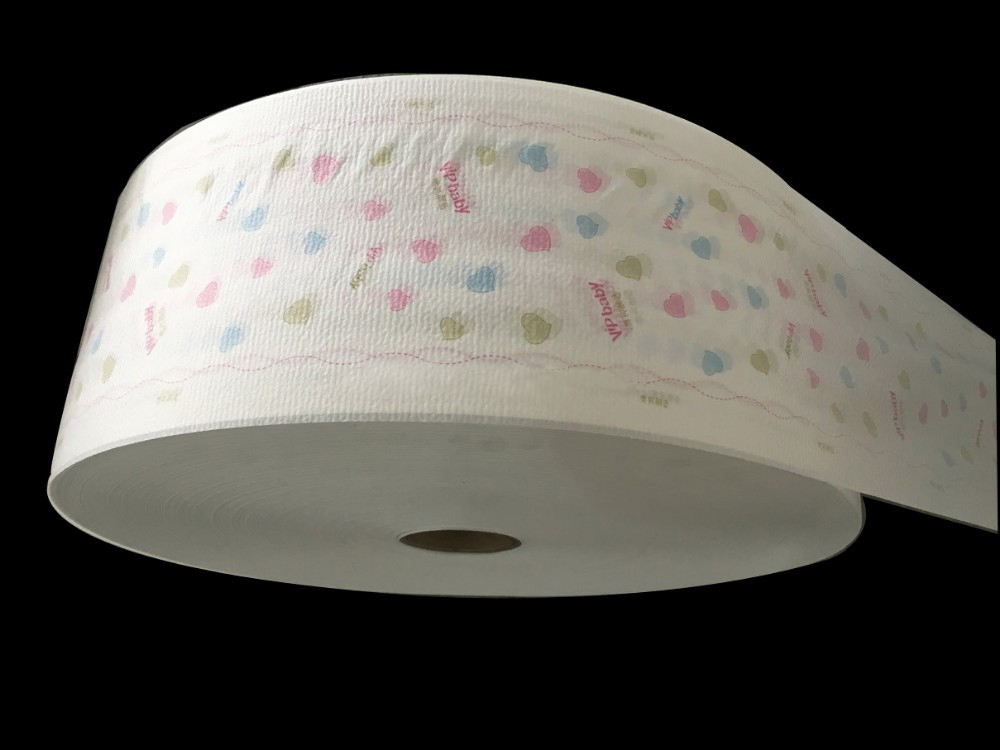
Diaper core and diaper chassis
Hits:895Time:2022-03-15There are two main basic parts for each diaper:
Diaper core – the middle of the diaper where urine and liquid feces are absorbed and stored.
Diaper chassis – the shell of the diaper holds the core together, attaches the diaper onto the baby, and creates a proper fit around the legs.
Diaper Core
The core is primarily composed of polypropylene, cellulose and a superabsorbent polymer.
Topsheet
The topsheet is the part of the diaper which comes in contact with the baby’s skin. It has been specially designed to quickly transfer fluids to the core while remaining soft and dry to the touch. Some topsheets include a skin-care lotion, such as those found in diaper skin-care products, which can protect the skin from over hydration and reduce irritation.
Acquisition/Distribution Layer
This layer is immediately under the topsheet of the diaper. It moves liquid away from the baby’s skin and distributes it more evenly across the entire diaper core for better absorbency.The biggest design improvement was the development, in the 1980s, of superabsorbent polymers that can absorb many times their weight in fluids. Children’s skin health has improved because these polymers lock moisture away where it cannot irritate skin. The severity and frequency of diaper rash has declined dramatically. As technology has improved, less and less cellulose has been needed. This allows major reductions in diaper weight and volume, resulting in a reduced environmental impact.
Absorbent Core
The absorbent core is the inner-most layer of the diaper. It typically consists of a blend of cellulose fluff pulp and polyacrylate granules. The cellulose portion quickly absorbs and transfers urine to the polyacrylate superabsorbent material, where it is trapped. This keeps the baby’s skin dry, even if he or she sits on a full diaper.
The biggest design improvement was the development, in the 1980s, of superabsorbent polymers that can absorb from several tens to several hundred times their weight in fluids. Children’s skin health has improved because these polymers lock moisture away where it cannot irritate skin. The severity and frequency of diaper rash has declined dramatically. As technology has improved, less and less cellulose has been needed. This allows major reductions in diaper weight and volume, resulting in a reduced environmental impact.
Diaper Chassis
The chassis is made up of the backsheet plus additional features that ensure the diaper fits well. These features can include stretch side panels, fastening systems and tapes, and leg cuffs.
Backsheet
The backsheet is the water-resistant outer layer of the diaper and it prevents liquids from passing through the diaper and leaking onto the baby’s clothing or surrounding environment. The polyethylene backsheet can be made with a structure that allows water vapor and air (but not liquids) to pass through, reducing moisture and keeping the skin drier.
Fit and Comfort Features
Materials and specific designs that help diapers fit well vary according to manufacturer, but they all perform the same basic functions. Important design elements often include stretch side panels and fastening systems that enable the diaper to be pulled snug against the baby’s torso to prevent leakages top. Elastics and cuffs on the diaper’s sides ensure improved fit around the legs and prevent leakage.
Additional Materials
In both the diaper core and chassis, small amounts of adhesives are used to bond component parts together to ensure performance, fit, and overall integrity. In some products, features such as designs or scents may be added.




